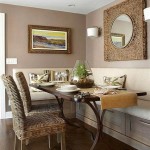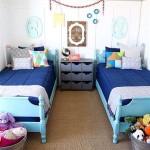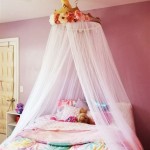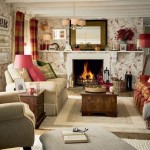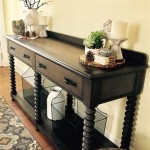How To Decorate Your Room As A Guy: Practical Tips and Stylish Ideas
Decorating a room can seem like a daunting task, especially for individuals who prioritize functionality and practicality. However, creating a personalized and aesthetically pleasing space is achievable with careful planning and attention to detail. This article provides a comprehensive guide focusing on practical tips and stylish ideas for decorating a room, catering specifically to male preferences and needs.
The key to successful room decoration lies in understanding personal style and translating it into a cohesive design. This involves considering aspects such as color palettes, furniture choices, lighting, and decorative elements. By focusing on functionality and incorporating personal interests, a room can become a comfortable and inspiring space that reflects individual character.
Defining Personal Style and Needs
Before embarking on the decoration process, it is crucial to define personal style and assess individual needs. This involves considering lifestyle, hobbies, and activities that will be conducted within the room. For instance, a student may require a dedicated study area, while a gamer may prioritize a comfortable and immersive gaming setup.
Identifying personal style entails exploring different design aesthetics such as minimalist, modern, industrial, or classic. Each style has distinct characteristics that influence furniture choices, color schemes, and overall ambiance. Utilizing online resources, magazines, and interior design websites can help in identifying preferred styles and specific design elements.
Once personal style is defined, evaluating functional needs is essential. This includes determining the primary purpose of the room, such as sleeping, working, relaxing, or entertaining. Accordingly, the room layout and furniture selection should cater to these specific needs. For example, a reading enthusiast might require a comfortable armchair and ample lighting, while someone who frequently hosts guests may need additional seating and a well-organized entertainment area.
Selecting a Color Palette and Materials
The color palette plays a significant role in creating the desired atmosphere in a room. Neutral colors, such as gray, beige, and white, are versatile and can be easily complemented with accent colors. These neutral tones provide a calming backdrop and allow for greater flexibility in incorporating different furniture styles and decorative items.
Darker colors, such as navy blue, deep green, and charcoal gray, can create a more sophisticated and masculine feel. These colors are often used in rooms designed for relaxation and entertainment. It is important to consider the size of the room when using dark colors, as they can make smaller spaces feel more confined. Lighter colors, conversely, tend to make a room feel more spacious.
The choice of materials significantly impacts the overall aesthetic and functionality of the room. Natural materials, such as wood, leather, and stone, bring warmth and текстура to the space. Wooden furniture, leather upholstery, and stone accents can contribute to a classic and timeless design. Industrial-style rooms often incorporate materials such as metal, concrete, and exposed brick, creating a raw and urban aesthetic.
Textiles, such as rugs, curtains, and upholstery, play a vital role in adding comfort and visual interest. Rugs can define different zones within the room and provide a soft surface underfoot. Curtains can control natural light and add privacy. Upholstery materials should be chosen based on durability and aesthetic appeal. Consider the intended use of the furniture when selecting textiles; for example, a frequently used sofa should be upholstered with a durable and stain-resistant fabric.
Choosing Furniture and Layout
Furniture selection should be based on both functionality and style. Prioritize essential pieces, such as a bed, desk, seating, and storage units. Choose furniture that complements the overall design aesthetic and fulfills specific needs.
A comfortable and supportive bed is essential for a good night's sleep. Consider the size of the room when choosing a bed frame. A platform bed offers a modern and minimalist look, while a bed with storage underneath provides added functionality in smaller spaces. A desk is crucial for work or studies, and should be chosen based on the amount of workspace required. Opt for a desk with ample storage to keep the area organized and clutter-free.
Seating options should be chosen based on the intended use of the room. A comfortable sofa or armchair is ideal for relaxation, while a pair of chairs and a coffee table can create a conversation area. Consider modular seating options, which can be easily rearranged to accommodate different needs. Storage units are essential for keeping the room organized and clutter-free. Shelving units, drawers, and cabinets can be used to store books, clothes, and other belongings. Choose storage units that complement the overall design aesthetic and provide ample space for storage needs.
The layout of the furniture should be carefully planned to maximize space and functionality. Create a focal point in the room, such as a fireplace, window, or artwork, and arrange furniture around it. Avoid overcrowding the room with too much furniture. Leave ample space for movement and ensure that pathways are clear. Consider the flow of natural light when arranging furniture. Position seating areas near windows to take advantage of natural light, and avoid placing furniture in front of windows that could block natural light.
Adding Lighting and Accessories
Lighting plays a crucial role in creating the desired ambiance in a room. Incorporate a combination of ambient, task, and accent lighting to provide sufficient illumination and create visual interest. Ambient lighting provides overall illumination, such as overhead lighting or floor lamps. Task lighting provides focused illumination for specific tasks, such as desk lamps or reading lights. Accent lighting highlights specific features in the room, such as artwork or architectural details.
Choose lighting fixtures that complement the overall design aesthetic. Industrial-style rooms might incorporate metal pendant lights or exposed bulb fixtures, while modern rooms might feature sleek and minimalist lighting designs. Dimmers can be used to adjust the brightness of lights, creating different moods in the room. Natural light is also an important consideration. Maximize natural light by keeping windows clean and unobstructed. Use sheer curtains to filter light and provide privacy.
Accessories add personality and visual interest to the room. Choose accessories that reflect personal interests and hobbies. Artwork, photographs, plants, and decorative objects can be used to personalize the space. Artwork can add color and visual interest to the walls. Choose artwork that complements the overall design aesthetic and reflects personal taste. Photographs can add a personal touch to the room. Display photographs in frames or create a gallery wall. Plants can bring life and energy to the room. Choose plants that are easy to care for and that thrive in the room's lighting conditions. Decorative objects, such as vases, sculptures, and candles, can add visual interest and create a cozy atmosphere.
Personal items, such as books, collections, and travel souvenirs, can be used to personalize the room and showcase individual interests. Display books on shelves or create a stack on a coffee table. Collections can be displayed in cabinets or on shelves. Travel souvenirs can serve as reminders of memorable experiences. Avoid cluttering the room with too many accessories. Choose a few key pieces that make a statement and reflect personal style.
Incorporating Technology and Entertainment
In today's digital age, incorporating technology and entertainment into room decor is essential. Consider the placement of television, gaming consoles, and audio systems to create a functional and enjoyable entertainment area. Wall-mounted televisions can save space and create a clean and modern look. Conceal cables and wires to maintain a clutter-free appearance.
Gaming consoles and accessories should be organized and easily accessible. Use storage units or shelves to keep gaming equipment tidy. Wireless headphones and charging docks can help to minimize clutter. Audio systems should be strategically placed to provide optimal sound quality. Consider using soundproofing materials to minimize noise pollution. Smart home devices, such as smart speakers and smart lighting, can add convenience and enhance the overall living experience.
Create a comfortable and immersive gaming setup by incorporating comfortable seating, ergonomic accessories, and ambient lighting. A comfortable gaming chair is essential for long gaming sessions. Ergonomic accessories, such as a keyboard and mouse, can help to reduce strain and improve posture. Ambient lighting can create a more immersive gaming experience. Consider using LED strip lights or smart bulbs to customize the lighting to match the game being played.
By carefully considering these aspects, a room can be transformed into a personalized and functional space that reflects individual style and caters to specific needs.
How Would I Decorate My Bedroom For A Young Male Quora
How Would I Decorate My Bedroom For A Young Male Quora

Transitional Masculine Bedroom Showcases A Plush Way To Decorate The Foot Of Mens Decor Male Ideas

Boys Room Decor Ideas For Your Home Design Cafe
How Would I Decorate My Bedroom For A Young Male Quora

17 Manly Home Decorating Tips For Guys Who Are Clueless

Bedroom Ideas For Boys That They Won T Grow Out Of

Modern Guy Dorm Rooms Bedroom Design Mens Decor

Men S Bedroom Ideas In 2025 Checkatrade

How To Decorate A Man S Bedroom 20 Cool Design Ideas 2025
Related Posts

